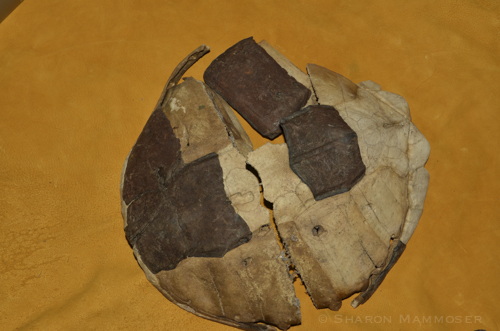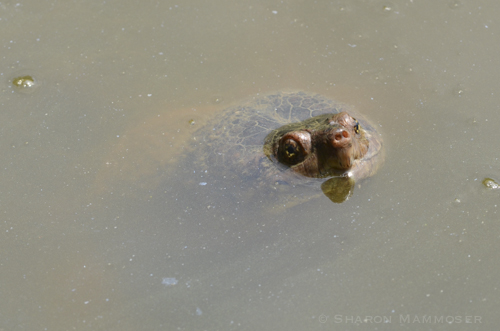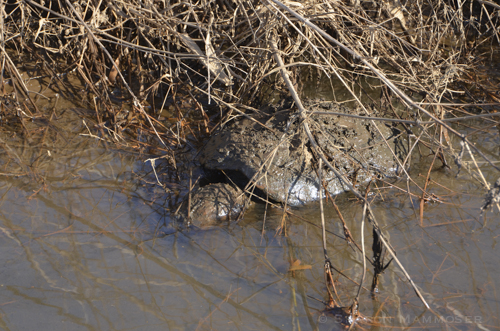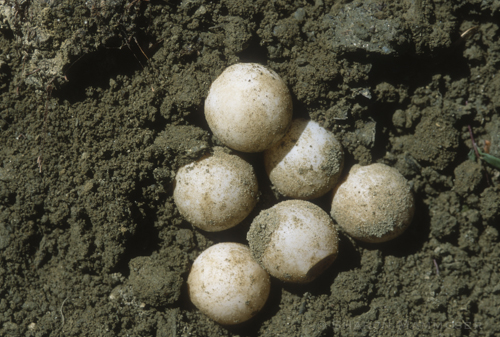 The scute and shell in last week’s puzzler is from a common snapping turtle–Chelydra serpentine. Did you recognize it? One of my readers guessed snapping turtle but wondered if the shape of the shell was right. She may have been thinking of the other kind of snapping turtle–an Alligator snapping turtle, which has a shell with three distinct spiky ridges on top rather than the smooth shell of the common snapping turtle.
The scute and shell in last week’s puzzler is from a common snapping turtle–Chelydra serpentine. Did you recognize it? One of my readers guessed snapping turtle but wondered if the shape of the shell was right. She may have been thinking of the other kind of snapping turtle–an Alligator snapping turtle, which has a shell with three distinct spiky ridges on top rather than the smooth shell of the common snapping turtle.

Common snapping turtles are found throughout North America east of the Rocky Mountains and evolved 40 million years ago! Wow, they have been on earth for a long time! Males are larger than females, weighing in the wild up to 45 pounds. Captive turtles can weigh up to 75 pounds, an incredible amount for an animal that is only 19 inches long. Common snapping turtles are omnivores, feeding on pretty much anything they can find and catch, including, insects, fish, birds, small mammals, amphibians, dead animals and a surprisingly large amount of aquatic plants. Snapping turtles will also eat other turtles.

Common snapping turtles live up to 30 years. Most of their time is spent underwater, in a freshwater pond, or lake. They prefer bodies of water with muddy bottoms and lots of vegetation. They are known to burrow into the mud with only their eyes and nostrils visible. This is a good tactic for staying hidden and grabbing some unsuspecting prey when it comes along.
Snapping turtles venture out of water to lay their eggs. (Here’s what to do if you find a turtle crossing the road) Females lay a single clutch in sandy soil, with 25-45 eggs. These look just like ping pong balls!  But are soft with a slightly rough surface. The female will lay the eggs, then leave them and return to water. Eggs are often eaten by animals–especially raccoons. Baby turtles hatch out 75-95 days later. And guess how the sex is determined? By temperature. That is, eggs that are incubated in soil/sand that is cooler will be males and in warmer soil will be females. This does make one wonder what will happen with global warming–will it be too warm eventually to produce any male turtles?
But are soft with a slightly rough surface. The female will lay the eggs, then leave them and return to water. Eggs are often eaten by animals–especially raccoons. Baby turtles hatch out 75-95 days later. And guess how the sex is determined? By temperature. That is, eggs that are incubated in soil/sand that is cooler will be males and in warmer soil will be females. This does make one wonder what will happen with global warming–will it be too warm eventually to produce any male turtles?
Check out the next puzzler here–it’s another reptile… do you recognize it?

